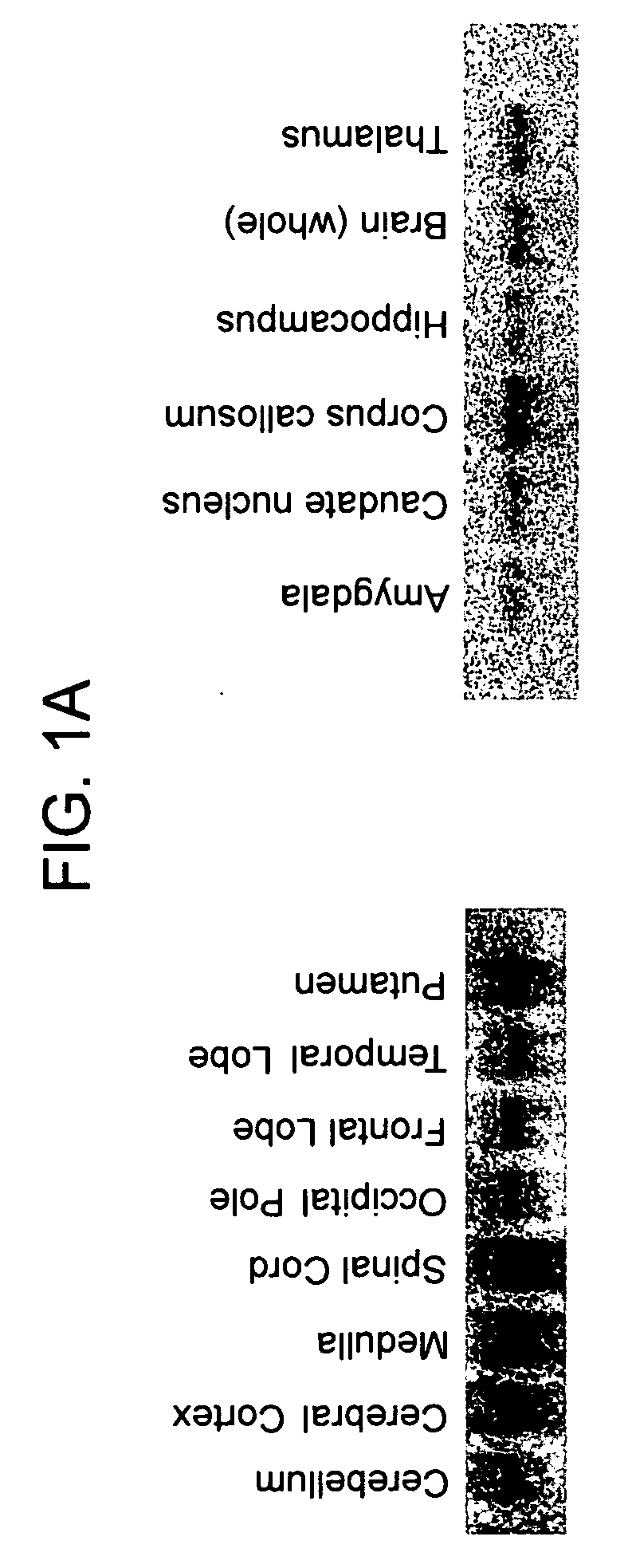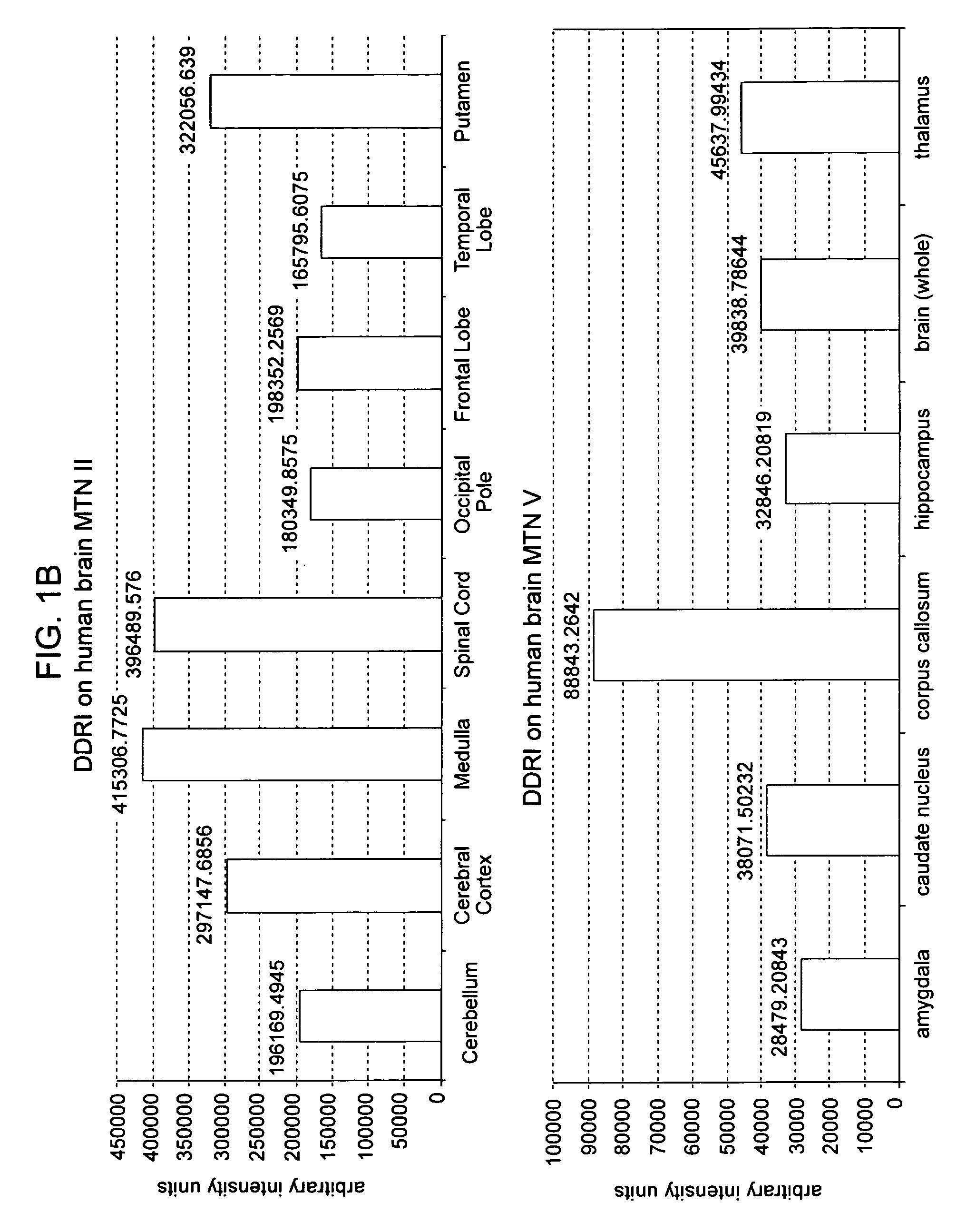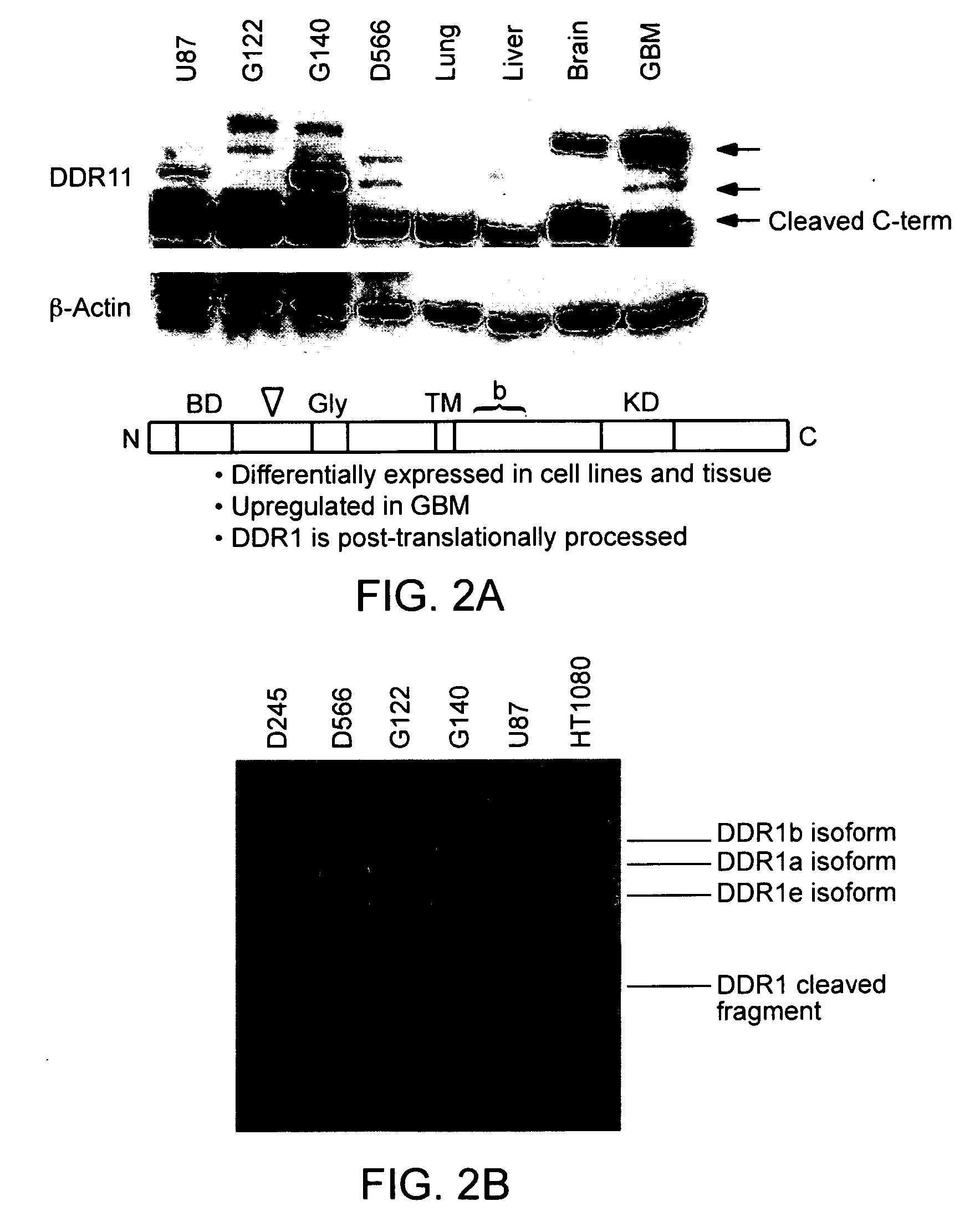Use of biomolecular targets in the treatment and visualization of brain tumors
- Summary
- Abstract
- Description
- Claims
- Application Information
AI Technical Summary
Benefits of technology
Problems solved by technology
Method used
Image
Examples
example 1
[0208] Brain Tumors: Tumor tissue, confirmed as astrocytoma grade IV by neuropathology, from unknown patients was snap frozen in the operation hall and served as experimental sample. Human whole brain tissue (Clontech Laboratories, Palo Alto, USA) served as control sample. Poly-A+ RNA prepared from the cells was converted into double-stranded cDNA (dscDNA) and normalized as described in co-pending U.S. patent application Ser. No. 09 / 627,362, filed on Jul. 28, 2000. Subtractive hybridization was carried out using the dscDNA from tumors with an excess of dscDNA prepared from the same region of a non-cancerous brain. Differentially expressed gene fragments were cloned into a plasmid vector, and the resulting library was transformed into E. coli cells. Inserts of recombinant clones were amplified by the polymerase chain reaction (PCR). The PCR products (fragments of 200-2000 bp in size) were sequenced using an oligonucleotide complementary to common vector sequences. The resulting seque...
example 2
Discoidin Domain Receptor-1a (DDR1a) Promotes Glioma Cell Invasion and Adhesion in Association with Matrix Metalloproteinase-2
[0243] Invasion of glioma cells involves the attachment of invading tumor cells to extracellular matrix (ECM), disruption of ECM components, and subsequent cell penetration into adjacent brain structures. Discoidin domain receptor 1 (DDR1) tyrosine kinases constitute a novel family of receptors characterized by a unique structure in the ectodomain (discoidin-1 domain). These cell surface receptors bind to several collagens and facilitate cell adhesion. In the following example it is shown that DDR1 is overexpressed in glioma tissues using cDNA arrays, immunohistochemistry and Western blot analysis. Functional comparison of two splice variants of DDR1 (DDR1a and DDR1b) reveal novel differences in cell based glioma models. Overexpression of either DDR1a or DDR1b caused increased cell attachment. However, glioma cells overexpressing DDR1a display enhanced invas...
PUM
| Property | Measurement | Unit |
|---|---|---|
| Fraction | aaaaa | aaaaa |
| Solubility (mass) | aaaaa | aaaaa |
| Stability | aaaaa | aaaaa |
Abstract
Description
Claims
Application Information
 Login to View More
Login to View More - R&D
- Intellectual Property
- Life Sciences
- Materials
- Tech Scout
- Unparalleled Data Quality
- Higher Quality Content
- 60% Fewer Hallucinations
Browse by: Latest US Patents, China's latest patents, Technical Efficacy Thesaurus, Application Domain, Technology Topic, Popular Technical Reports.
© 2025 PatSnap. All rights reserved.Legal|Privacy policy|Modern Slavery Act Transparency Statement|Sitemap|About US| Contact US: help@patsnap.com



